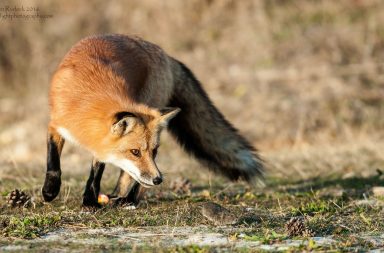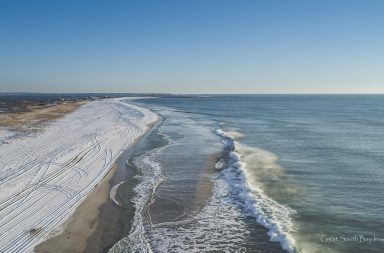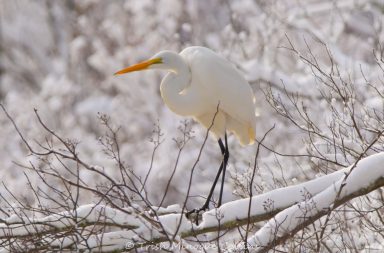By Mike Busch
Before getting to this week’s images, Michelle Baron brought to my attention a news release from the New York State DEC with some important and common sense information on Winter Birding. The comments seem more suited to upstate but most of it applies on Long Island as well. Please see below:
For Release: Wednesday, February 7, 2018
DEC Cautions Birders Not to Cause Harm When Observing Winter Raptors
While winter is a great time to observe birds and other wildlife, the New York Department of Environmental Conservation (DEC) encourages all wildlife enthusiasts to do so in a manner that is legal, safe, and does not harm wildlife, Commissioner Basil Seggos announced today.
“Bird and wildlife watching is a popular and economically important year-round activity, and we encourage all New Yorkers and visitors alike to responsibly and safely enjoy observing our state’s birds and other wildlife,” said Commissioner Seggos. “Winter is a great time to get out and watch birds, but it is also a crucial period of survival for birds. During the winter months songbirds flock to feeders, waterfowl and eagles congregate at waters not covered in ice, and hawks and owls from Canada are easily observed roosting in large open grasslands, and by following our tips for safely watching birds and other wildlife, everyone can ensure the health of these species.”
Winter provides a rare opportunity for bird and wildlife watchers to view snowy owls, short-eared owls, rough-legged hawks, and other birds of prey. Known as winter raptors, these birds spend much of the year in the Canadian tundra breeding, raising young, and hunting, but migrate to upstate New York in the winter. Birders are excited to view these visitors that can be easily seen roosting and soaring in or near open fields.
Populations of prey species are lower during the winter and harder to locate under snow. Raptors, like other wildlife, need more energy to stay warm. During the winter these birds roost (rest) for long periods of time to conserve energy.
“We are fortunate to have rare and beautiful birds spending time in New York during the winter, including the vulnerable Snowy Owl. We hope that birders and photographers will do their part to ensure the safety and success of these species,” says Jillian Liner, Director of Bird Conservation for Audubon New York. “Put the birds first and give them space. Flushing a bird from where it was perched causes them to waste critical energy which can have detrimental consequences. If you are patient, you will get the look and photo you are hoping for.”
Most birders, recognizing winter raptors’ critical needs, observe the birds from a distance. Unfortunately, in their enthusiasm to observe and photograph the birds up close, some birders may approach the birds and flush them – cause them to fly. If done repeatedly during the winter months, the birds can lose energy reserves that can impact their ability to return to the tundra in the spring to breed and in some cases result in death.
In addition, DEC has received complaints of people trespassing on private property or congregating unsafely on roads to observe winter raptors. The first practice is illegal and the second is dangerous. DEC encourages wildlife watchers to observe birds in a safe and legal manner:
- Do not enter private property without permission of the landowner;
- Park cars well to the side of the road, completely out of travel lanes; and
- Stay off the road while observing birds and pay attention to traffic, not the birds, when crossing roads.
For more wildlife watching tips on how people can observe wildlife in a legal, safe manner that does not harm or harass wildlife, visit DEC’s website.
The Long Island Wildlife Photography group tries to promote ethical birding and has several group rules to discourage undue pressure. With over 10,000 members and counting, we have a responsibility to do our best to protect our local wildlife. We maintain a strict NO LOCATION policy and initiate a moratorium on all Owls (including Snowy) until Mid April after nesting season. With the comeback of the Bald Eagle we also ask people to refrain from posting images of Eagle Nests.
Getting to this week’s images the rarest find would have to be the Pileated Woodpecker that Anita Regler found just below. This huge woodpecker for some reason has not established itself on Long Island, favoring nearby places like New Jersey, Westchester County and Connecticut. Perhaps a few more will discover that Long Island has some similar mature forests and take up residence. Other standouts include both immature and and adult Bald Eagles, Grey Seals, Red Necked Grebe, Pied Billed Grebe and Horned Grebe. The Horned Grebe will also be next week’s bird of the week coming out on Tuesday so please go find some new shots or check your libraries!
This week’s cover goes to Ed Walsh with an excellent image of Long Tailed Duck.

Anita Regler | Pileated Woodpecker

Dr. Artie Kopelman | Grey Seal Rookery

Vicki Jauron | Hooded Merganser

Barbara Bedell | Muscovy Duck

Barbara Lash | Green Winged Teal

Cindy Goldman | Bald Eagles

Bonnie Forman-Franco | Surf Scoter



